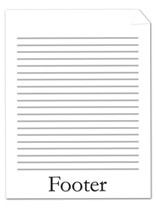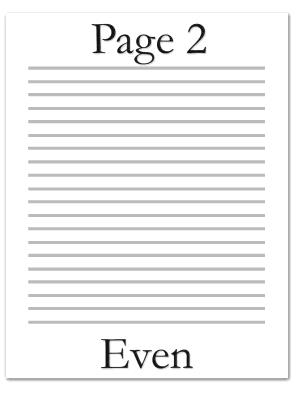17.10.3 ftr
This element specifies the content for a single footer for use within one or more sections of a WordprocessingML document.
Within the ftr element, the content of the element is similar to the content of the body (17.2.2) element, and contains what is referred to as block-level markup - markup which can exist as a sibling element to paragraphs in a WordprocessingML document.
[Example: Consider the following simple one page document with one footer:

This document defines one footer with the text footer. The footer contents are stored in a unique footer part. The resulting footer is represented by the following WordprocessingML:
<w:ftr>
<w:p>
<w:r>
<w:t>Footer</w:t>
</w:r>
</w:p>
</w:ftr>Since footers are containers of block level contents, all block level elements can be used within them. In this particular example, the content is a single paragraph. end example]
[Example: Consider a more complex three page document with different first, odd, and even page footers defined:



This document defines three footers stored in three different footer parts. The resulting footers are represented by the following WordprocessingML:
First page footer part:
<w:ftr>
<w:p>
<w:r>
<w:t>First</w:t>
</w:r>
</w:p>
</w:ftr>Even page footer part:
<w:ftr>
<w:p>
<w:r>
<w:t>Even</w:t>
</w:r>
</w:p>
</w:ftr>Odd page footer part:
<w:ftr>
<w:p>
<w:r>
<w:t>Odd</w:t>
</w:r>
</w:p>
</w:ftr>end example]
[Note: The W3C XML Schema definition of this element’s content model (CT_HdrFtr) is located in A.1. end note]